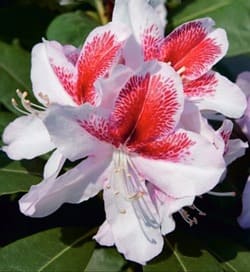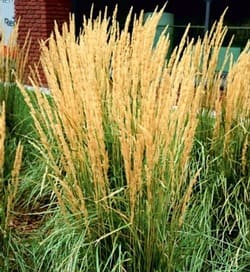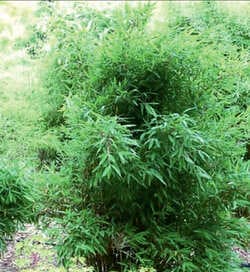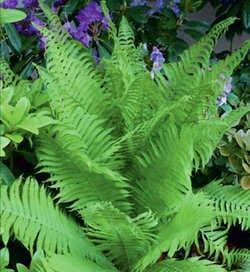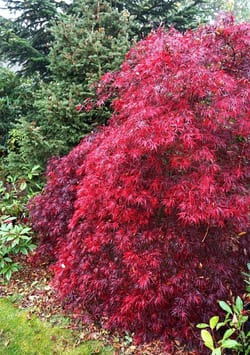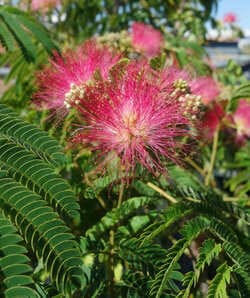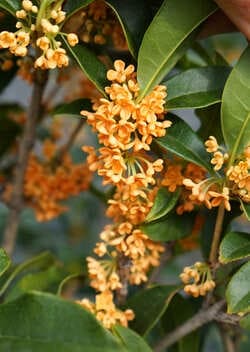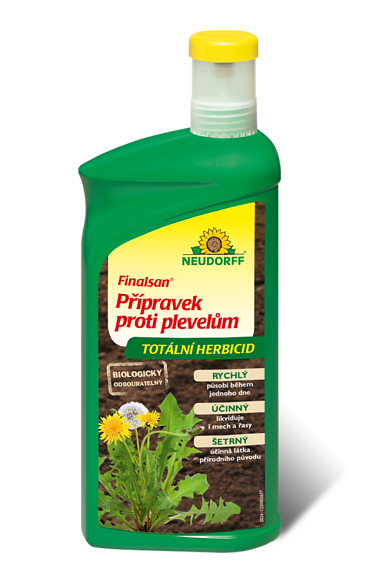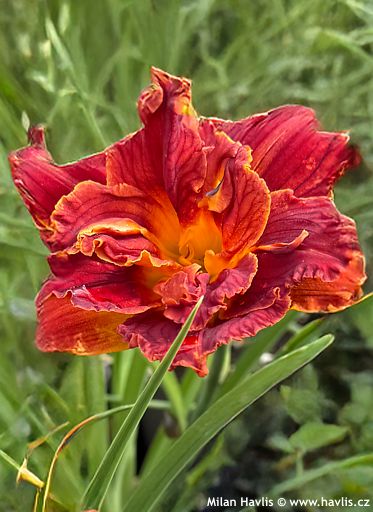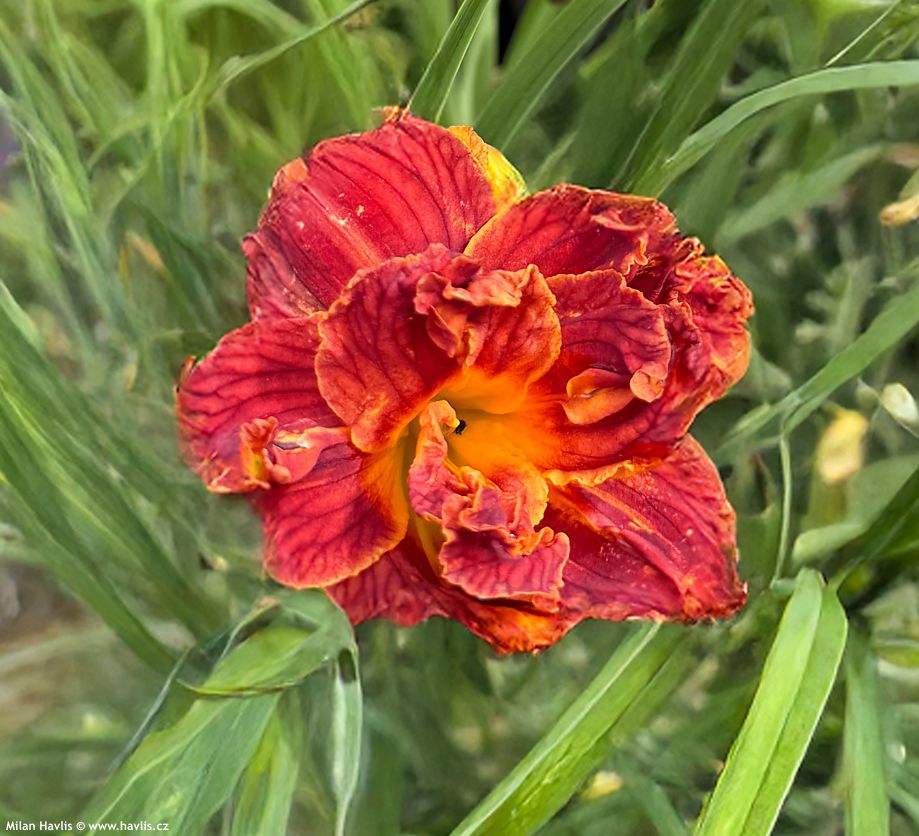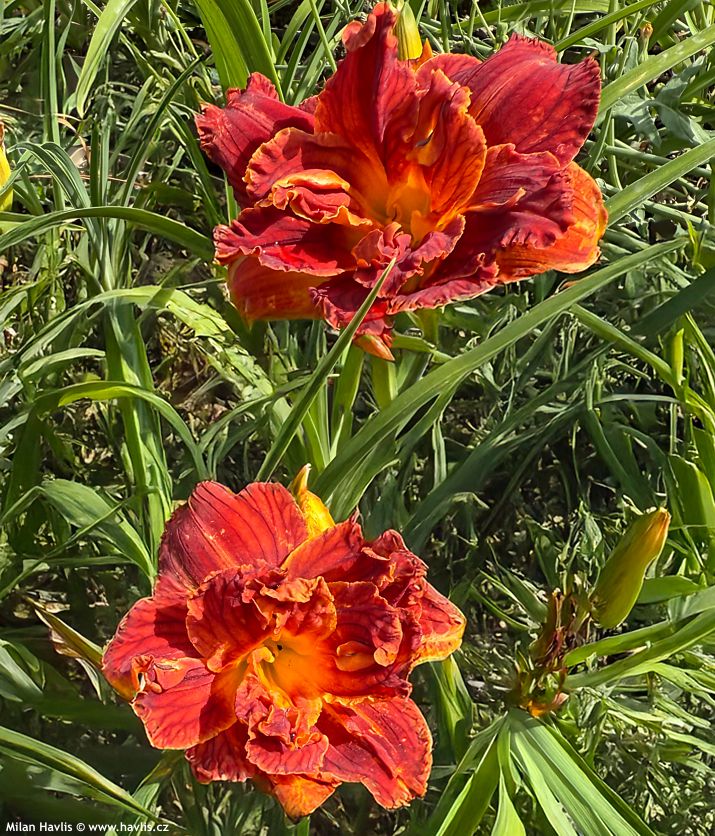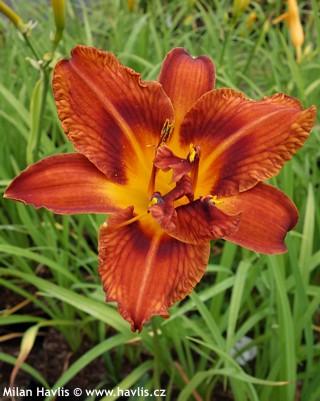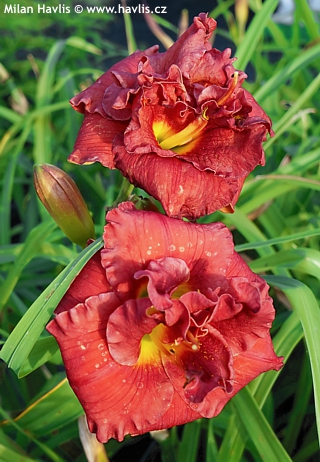Hemerocallis 'PAPRIKA FLAME' daylily (tetraploid)
Hemerocallis
The genus Hemerocallis comprises approximately 15 species of herbaceous perennials in the family Asphodelaceae, native to East Asia—particularly China, Korea, and Japan. These plants are characterised by grass-like leaves, fleshy rhizomes, and flowers that open for just a single day. This fleeting bloom cycle gave the genus its name: from the Greek “hemera” meaning day and “kallos” meaning beauty. The first botanical description was published by Carl Linnaeus in 1753, although some species had been cultivated in Asia for thousands of years. Daylilies appeared in Europe as early as the 16th century, but the true breeding boom came in the 20th century in the United States, where thousands of cultivars were developed in an astonishing range of colours, shapes, and sizes.
People have come to love daylilies not only for their resilience, but also for their poetic connection to the rhythm of the day. A flower opens in the morning and fades by evening — like a fleeting wink of summer. In China, some species were used as medicinal plants, and their flower buds are still added to traditional dishes. In Korea, daylilies symbolized motherhood, while in Japan they appear in poetry as metaphors for impermanence. In Western gardens, they became popular perennials thanks to their ability to bloom all summer long with little care. And although each flower lasts only a single day, the plant produces so many that the garden feels like a blooming meadow for weeks on end.
Paprika Flame is a brilliantly coloured tetraploid daylily that looks like an explosion on a Moroccan spice market. Can you imagine a burst of paprika, saffron, and turmeric? That’s exactly the palette blended into this double-blooming cultivar. It bears flowers about 12 cm wide, in deep orange to reddish-orange tones with a darker center and golden throat. The petals are gently ruffled with a soft frill. It blooms in July, sometimes into August, and is a reliable rebloomer. The flowers appear on scapes about 60 cm tall, rising above a compact clump of medium-green, arching foliage. Its habit is sturdy, and the clump holds its shape well without support. In the garden, it is unmissable — both for its vivid color and the bold form of its blooms.
The ‘Paprika Flame’ cultivar was introduced by American hybridizer David Kirchhoff, who registered it in 2000. Kirchhoff was one of the most influential figures in modern daylily breeding — not only as a creator, but also as a passionate advocate. He had a keen eye for composition: his daylilies weren’t just flowers, but living images with a place and purpose in the garden. Together with his colleague Mort Morss, he ran the Daylily World hybridizing program in Kentucky, where dozens of cultivars were developed, known for their intense color, fragrance, and reblooming ability. He was also active in the American Hemerocallis Society (AHS), serving as its president and later as editor of its journal. His work influenced an entire generation of breeders — not only technically, but aesthetically.
Daylilies have strong, vibrant green foliage that decorates the garden from spring to winter. They are rarely troubled by pests or diseases, and slugs are only an occasional nuisance. Provide them with full sun or light shade, and for more abundant flowering, apply a light dose of fertilizer each spring. They tolerate almost any soil, even dry ones, though they thrive best in moist, well-drained soil. They are also suitable for outdoor containers. After flowering, the entire clump can be cut back, or old, tired leaves can be thinned out. Leaves may also be removed at the end of the season, though this is not necessary — the plant manages well on its own. Hardiness is excellent, down to –40 °C (USDA zone 3).
Last update 11-11-2025
Goods are shipped all over Europe. For Russia and U.K. and for further details please read about SHIPPING OPTIONS HERE.
Are you interested in a serious discount for orders NOV-FEB? Check your options here.
THE PRICES INCLUDE VAT of 15%. For quick conversion you can use 1 CZK = approx. 0.04 EUR
- STANDARD QUALITY - Plants of this group are 1st class quality with number of branches and overall density adequate to their size and age, considering they were container grown.
- DE LUXE QUALITY - This label guarantees a luxurious quality of manually selected plants that, compared to their height and age, are exceptionally dense and beautiful.
- EXTRA - These plants are usually mature and bigger specimens with exceptional overall appearance.
- STANDARD (as described in the plant form) means a tree with a trunk of 190-210 cm and a crown at the top, unless specified differently. The commercial size for trees is their girth measured in the height of 1m from ground.
- HOBBY - These plants are of the same quality as our standard-quality plants but younger and therefore cheaper.
- SHRUB - a woody plant with branches growing bushy from the ground level.
- HALF-STANDARD or MINI-STANDARD - a small tree with shorter trunk, its size is usually specified.
- FEATHERED - These are trees with branches growing already from the base of the trunk and up along the stem.
- GRASSES and PERENNIALS - Sizes given usually read the diameter of the pot or the clump, as specified.












